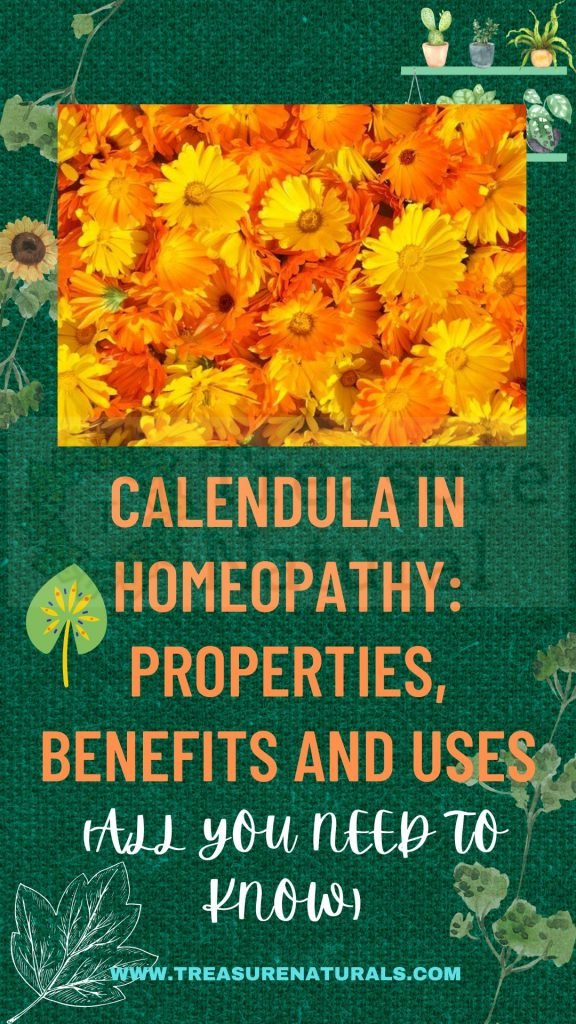
Calendula is a homeopathic remedy made from the mother tincture of Calendula officinalis, useful for the health of the skin, stomach and glands. Let’s find out more.
The homeopathic remedy Calendula is obtained from the mother tincture of leaves and flowers of Calendula officinalis and from the subsequent dilutions and dynamizations in hydroalcoholic solution.
Calendula officinalis is a perennial herbaceous plant, belonging to the Composite family. Wild, it grows here and there in the fields and can be grown in gardens. It blooms almost all year round (from April to October). Due to the different therapeutic properties the plant is used in natural medicine.
It is antiseptic, antifungal and contains hormones and precursors of vitamin A. Petals tone the skin, cure its cracks, burns and eczema. Also with them you can prepare calming washes for the eyes and a yellow dye.
Disc flowers show effects that reduce hair development, useful in face creams. For internal use it treats stomach pains, inflammation of the lymph nodes and stimulates the liver, helping alcoholics to detoxify. The leaves are used in salads and flowers to decorate rice and fish dishes.
When to use Calendula
Calendula is a deep-acting remedy that acts on the vital forces of the body, revitalizing the metabolism. It rebalances the absorption of calcium, so it acts specifically on the bones and joints, as well as on the lymph glands, veins, skin, and the digestive, respiratory, urinary and female genital systems.
It acts on the lymphatic system and on different organs and has a particular affinity for the female genital apparatus. It has antiseptic, anti-inflammatory and healing properties. The remedy is also useful in cases of ulcers, herpetic rashes, hardening of the glands, tonsil abscesses, difficulty urinating of the elderly. It proves to be a valuable remedy in obstetrics and dentistry.
The homeopathic remedy Calendula is generally used in the following cases:
- glandular disorders, swelling and hardening of the lymph nodes of any part of the body (submandibular, axillary, inguinal, etc.)
- skin problems, erythema, urticaria, eczema, calluses, mycosis, cuts, burns, insect bites, redness in general, herpes
- eye disorders, conjunctivitis
- mouth disorders, such as small blisters at the corners
- throat problems, tonsillitis, swollen and painful submaxillary glands with every movement of the head
- tooth disorders, tooth extractions with tearing of the gums
- disorders of the gastrointestinal system, gastritis, ulcers, burns, excoriations in the esophagus
- disorders of the female genital system, inflammation and uterine infection resulting from childbirth
- disorders of the male genital apparatus
- respiratory problems, colds, pneumonia
- urinary tract problems, urinary difficulties in the elderly
- generalized pains, rheumatism, neuralgic pains, lumbago; muscle pain, headache following trauma, pain in the abdomen or lower abdomen
Doses and administration
For internal use: for all cases, dilution 3CH, 3 granules or 5 drops 3 to 6 times a day. For external use: for all cases, ointment or solution to be applied on the affected part 2 – 3 times a day.
Who is Calendula recommended for?

The subject Calendula is irritable, depressed, nervous, has a very sharp hearing, is easily frightened and the act of drinking causes him strong chills. Symptoms worsen in the fresh air, with cold, with humidity, with cloudy weather.
They improve with rest or, in the case of illness with fever, if the subject walks.






